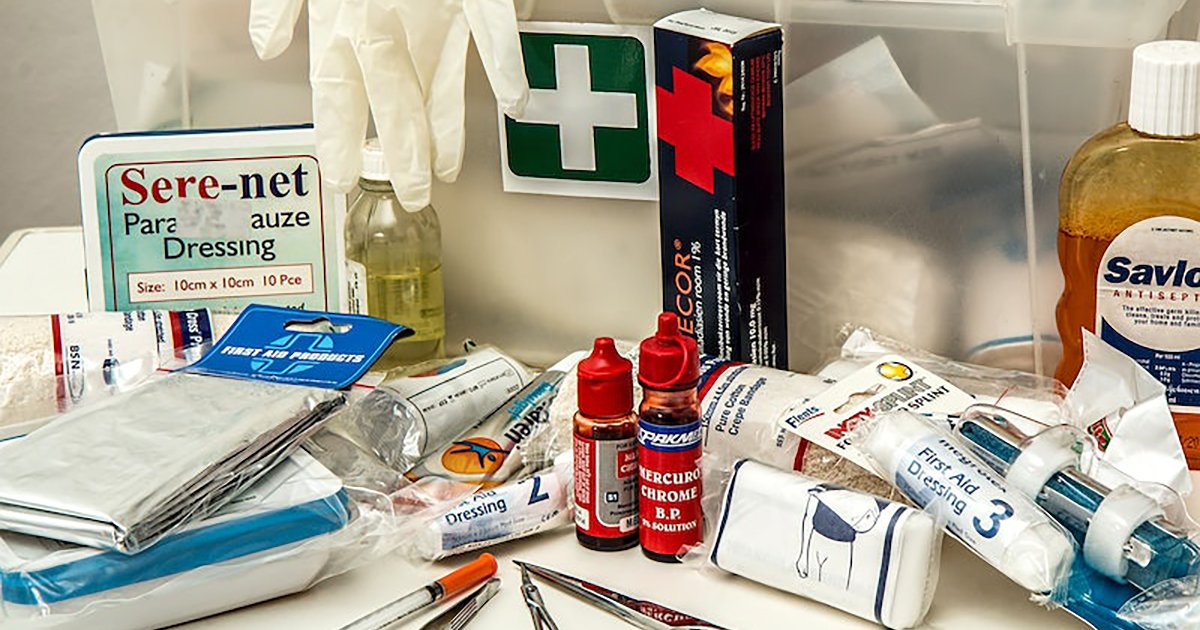When the storm rages outside and the ground trembles beneath your feet, your home stands as a fortress against the wrath of nature. In these moments of vulnerability, it is crucial to take proactive steps to protect your loved ones and safeguard the sanctuary you call home. From earthquakes and hurricanes to wildfires and floods, this article delves into the realm of home defense measures, revealing the ultimate strategies to fortify your dwelling against the unyielding forces of natural disasters. Explore ingenious methods that will empower you to prepare, protect, and prevail in the face of nature’s unrestrained fury.
Table of Contents
- Preparing Your Home: Essential Steps to Protect Against Natural Disasters
- Understanding the Threat: Identifying and Analyzing Potential Disasters in Your Area
- Building a Solid Foundation: Strengthening Your Home’s Structure for Resilience
- Stacking the Odds in Your Favor: Equipping Your Home with Proper Emergency Supplies and Equipment
- Safeguarding Your Loved Ones: Creating a Comprehensive Emergency Plan
- Q&A
- Key Takeaways

Preparing Your Home: Essential Steps to Protect Against Natural Disasters
When it comes to safeguarding your home from the unpredictable forces of nature, taking proactive measures is crucial. By following these essential steps, you can enhance the resilience of your home, providing a strong line of defense against natural disasters.
Secure Your Home’s Structure
- Ensure your roof is in good condition and can withstand strong winds.
- Anchor heavy furniture and appliances to prevent them from toppling during earthquakes or high winds.
- Install hurricane shutters or impact-resistant windows to shield your home from flying debris during storms.
Create an Emergency Supply Kit
Putting together an emergency supply kit is essential in times of crises. Consider including:
- Non-perishable food and water to sustain your family for at least three days.
- A battery-powered or hand-cranked radio to stay updated on crucial information.
- Flashlights, extra batteries, and a first aid kit.
- Copies of important documents, such as identification cards and insurance policies.
Develop an Evacuation Plan
It is prudent to have a well-thought-out evacuation plan in place for each possible natural disaster. Ensure your plan includes:
- Identifying multiple evacuation routes and their corresponding safe meeting points.
- Assigning roles and responsibilities to family members, ensuring everyone knows what to do during an emergency.
- Regularly practicing the evacuation plan, so it becomes second nature when faced with a real situation.

Understanding the Threat: Identifying and Analyzing Potential Disasters in Your Area
When it comes to ensuring the safety and well-being of ourselves and our loved ones, knowledge is power. It is crucial to understand and identify the potential disasters that may occur in our area, as this enables us to better prepare and respond effectively. By analyzing historical data and local reports, we can gain valuable insights into the threats we might face and take proactive measures to mitigate their impact.
- Know your surroundings: Take the time to familiarize yourself with the geographical features and climate patterns specific to your region. Are you prone to hurricanes, earthquakes, floods, or wildfires? Identifying the most common hazards will help you allocate resources accordingly.
- Stay informed: Keep up-to-date with local news, emergency notifications, and alerts. Tune in to trusted sources and subscribe to weather or disaster-related apps for real-time updates. Awareness is key.
- Assess vulnerabilities: Conduct a thorough evaluation of your home and community to identify potential weak points. Are there structures or trees that could pose a risk during strong winds? Are there escape routes in case of an evacuation? By recognizing vulnerabilities, you can address them before disaster strikes.
- Build an emergency kit: Prepare a well-stocked emergency kit that includes essential items such as food, water, first aid supplies, flashlights, and batteries. Be sure to customize it based on the specific hazards prevalent in your area.
- Establish a communication plan: Develop a clear and concise emergency communication plan with your family, friends, and neighbors. Share important contact information and establish a meeting point in case of separation or evacuation.
By proactively understanding and analyzing the potential disasters in your area, you can take crucial steps to minimize the impact they may have on your life and those around you. Remember, preparedness is the key to survival.

Building a Solid Foundation: Strengthening Your Home’s Structure for Resilience
Ensuring the longevity of your home starts with a solid foundation. As time goes by, environmental factors such as earthquakes, floods, and extreme weather conditions can weaken the structure of your beloved abode. By taking proactive measures to strengthen your home’s foundation, you can be assured of its resilience and your peace of mind.
Here are some effective strategies to fortify your home’s foundation:
- Inspect Regularly: Conduct thorough inspections of your foundation to identify any signs of damage or weakness. Look out for cracks, settling, or unlevel areas that may indicate underlying issues.
- Waterproofing: Moisture infiltration can greatly compromise a foundation’s stability. Consider waterproofing solutions such as installing a drainage system, sealing cracks, or applying a waterproofing membrane to prevent water damage.
- Reinforce with Steel: Strengthening your home’s foundation with steel reinforcements can significantly enhance its ability to withstand external pressures. Consult a professional engineer to determine the appropriate reinforcement techniques for your specific foundation type.
- Upgrade Support Systems: Older homes may require additional support systems like helical piers or wall anchors to combat foundation movement. These solutions help distribute weight evenly and stabilize the structure.
- Maintain Proper Drainage: Ensure that your downspouts and gutters are directing water away from the foundation. Proper grading around your home can also prevent water pooling near the structure, minimizing the risk of foundation damage.
By implementing these measures and working with experienced professionals, you’ll be on your way to securing a strong and resilient foundation for your cherished home. Remember, investing in the stability of your foundation is not only a practical decision but also an investment in the future well-being of your family and home.

Stacking the Odds in Your Favor: Equipping Your Home with Proper Emergency Supplies and Equipment
Equipping Your Home with Proper Emergency Supplies and Equipment
Luck favors the prepared, especially when it comes to emergencies. It’s crucial to stack the odds in your favor by equipping your home with the right emergency supplies and equipment. Being well-prepared ensures you can handle unforeseen situations with confidence and efficiency. Here are some essentials to consider:
- First Aid Kit: A well-stocked first aid kit is a must-have in any household. Ensure it includes band-aids, antiseptic wipes, adhesive tape, sterile gloves, pain relievers, and any necessary medication specific to your family’s needs.
- Emergency Food and Water: Stock up on non-perishable food items like canned goods, energy bars, and dried fruits. Store enough drinking water to sustain your family for at least three days. Remember to periodically replace both food and water supplies to keep them fresh.
- Emergency Power Source: In case of a power outage, equip your home with emergency power options like a generator or solar-powered battery. These not only keep essential appliances running but also allow you to charge your phones and other devices.
- Communication Tools: Keep a battery-powered or hand-cranked radio handy to stay updated on emergency broadcasts. Additionally, ensure you have fully charged portable phone chargers and spare batteries for flashlights and other battery-operated devices.
By having these essential emergency supplies and equipment, you’ll be prepared to handle unexpected situations and safeguard the well-being of your family. Remember, being proactive today can make all the difference tomorrow.
Safeguarding Your Loved Ones: Creating a Comprehensive Emergency Plan
When it comes to the safety and well-being of our loved ones, preparation is key. Creating a comprehensive emergency plan not only empowers you to tackle unforeseen circumstances with confidence but also ensures that your family is well-protected in times of crisis. The secret lies in devising a plan that covers all bases, leaving no stone unturned. Here are some essential steps to help you build a robust emergency plan:
1. Identify potential risks:
Think about the hazards specific to your region or environment that could pose a threat to your family’s safety. These might include natural disasters like earthquakes, hurricanes, or floods, as well as human-made emergencies such as fires or incidents of violence.
2. Establish a communication strategy:
In times of crisis, staying connected with your loved ones is vital. Create a clear communication plan that includes emergency contact numbers, a meeting point, and a designated out-of-state contact person who can serve as a central point for coordination and information exchange.
3. Assemble an emergency kit:
Prepare a well-stocked emergency kit that should include essential supplies like food, water, medication, first aid items, flashlights, batteries, and any specific necessities for family members such as infant formula or pet supplies. Keep the kit easily accessible and ensure everyone in your family knows its location.
4. Develop evacuation and shelter-in-place plans:
Discuss and practice evacuation routes from your home, workplace, or school. Identify safe places to seek shelter if required. Make sure to consider the needs of all family members, including children, elderly individuals, and those with disabilities, when formulating your plans.
By taking these proactive measures, you are taking significant steps towards safeguarding your loved ones in times of emergency. Remember, preparedness saves lives, and an effective emergency plan is an invaluable asset for every family.
Q&A
Q: What are the top home defense measures to protect against natural disasters?
A: The best measures include securing heavy furniture, installing flood barriers, reinforcing windows and doors, creating an emergency kit, and having a well-rehearsed evacuation plan.
Q: How can I secure heavy furniture to prevent injury during earthquakes?
A: To avoid potential injury, secure tall and heavy furniture with anti-tip straps or brackets, anchor bookcases and cabinets to the wall, and ensure that heavy objects are stored on lower shelves.
Q: What are effective flood defense measures to safeguard my property?
A: To protect your home from flooding, installing flood barriers such as sandbags or flood barriers, sealing basement walls with waterproofing compounds, and elevating essential utilities off the ground are highly effective measures.
Q: How can I reinforce windows and doors against strong winds and hurricanes?
A: Reinforcing windows and doors can be done by applying impact-resistant film, installing hurricane shutters or plywood, adding metal or wooden braces to doors, and upgrading to impact-resistant doors and windows.
Q: What essentials should be included in an emergency kit for natural disasters?
A: Essential items for an emergency kit include non-perishable food, water, a first aid kit, flashlights, batteries, a battery-operated radio, extra cash, important documents, and any necessary medications.
Q: How do I create an effective evacuation plan for my family?
A: Creating an evacuation plan involves mapping out evacuation routes, choosing secondary meeting locations, designating a safe room within your home, practicing the plan regularly with family members, and staying informed with local emergency services.
Key Takeaways
As we conclude this exploration into the best home defense measures for natural disasters, it becomes clear that preparing for the unpredictable is not simply a matter of necessity, but an art form in itself. The quest to protect our homes and loved ones requires a delicate balance of creativity, resourcefulness, and unwavering determination.
While Mother Nature may wield her unpredictable forces, it is within our power to harness our own ingenuity and foresight to fortify our homes against her fury. From the stalwart foundations of earthquake-resistant construction to the resilient walls that shield us from hurricane winds, we have witnessed the remarkable feats of engineering and innovation that arise in the face of adversity.
Yet, beyond technological advancements, our best defense lies in our unity as a community. The thread that binds us together in times of peril becomes the foundation upon which our resilience is built. Neighbors looking out for neighbors, sharing resources and support, reaffirms our unwavering spirit and hammers home the ultimate truth that no storm can truly break the strength of human solidarity.
As we bid farewell, certain in the knowledge that we have fortified our homes against nature’s wrath, let us not forget that safety lies not only in preparation but also in a shared responsibility. By advocating for disaster-resistant regulations, raising awareness, and encouraging a proactive mindset, we can collectively contribute to a safer and more secure future for ourselves and future generations.
In this journey towards safeguarding our beloved homes, let us embrace our creativity, nurture neutrality, and foster an unyielding spirit that refuses to falter in the face of adversity. Together, we can build a haven where resilience knows no bounds, empowering each other in the knowledge that we are not alone in this seemingly turbulent world.
As an affiliate, my content may feature links to products I personally use and recommend. By taking action, like subscribing or making a purchase, you’ll be supporting my work and fueling my taco cravings at the same time. Win-win, right?
Want to read more? Check out our Affiliate Disclosure page.